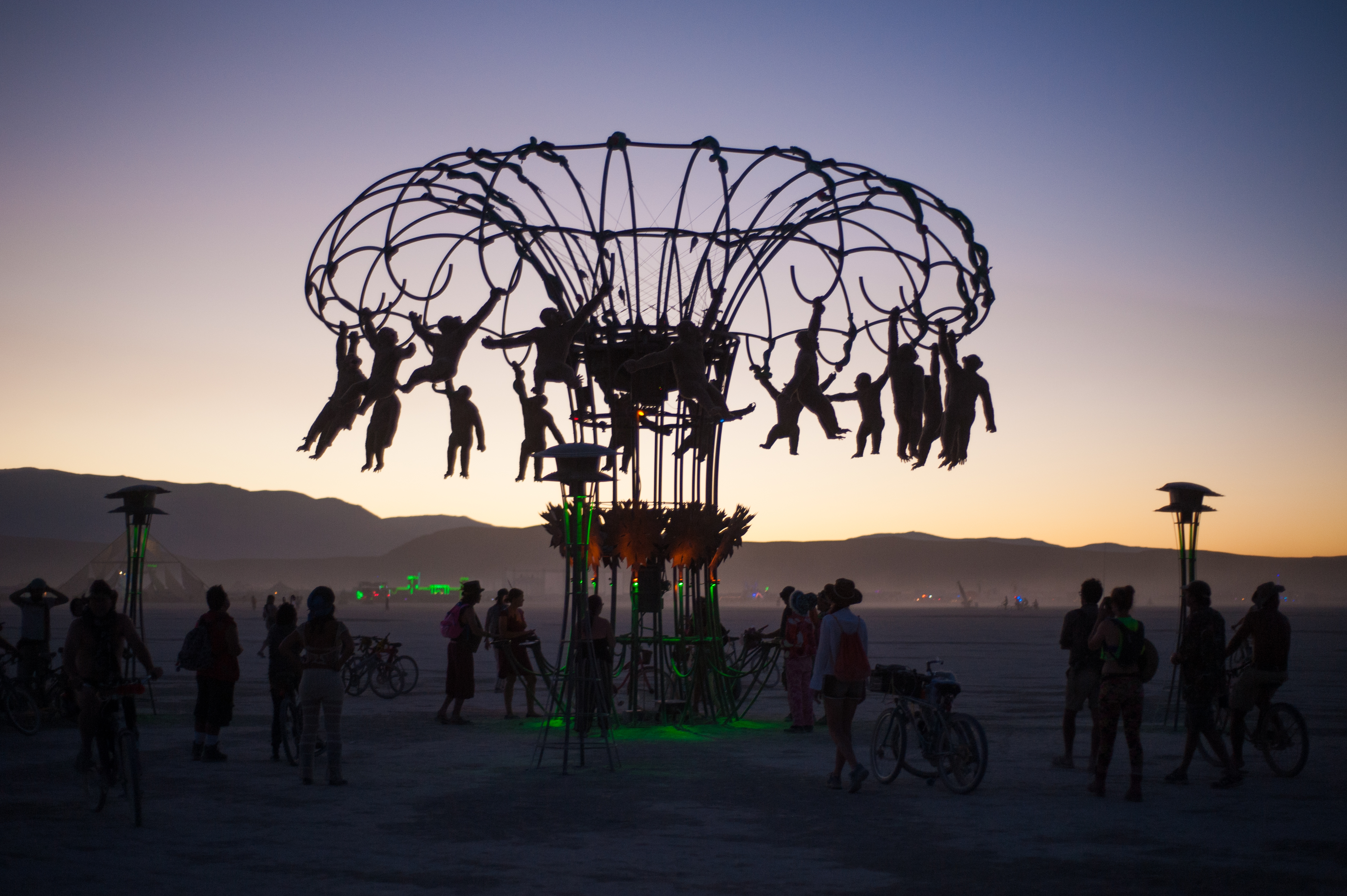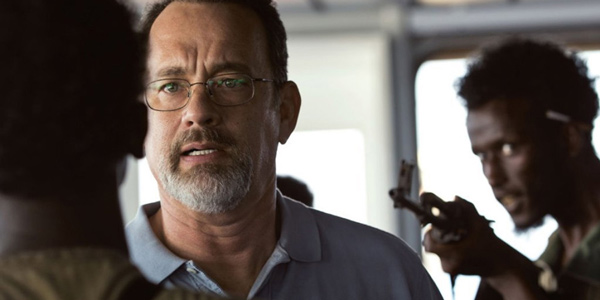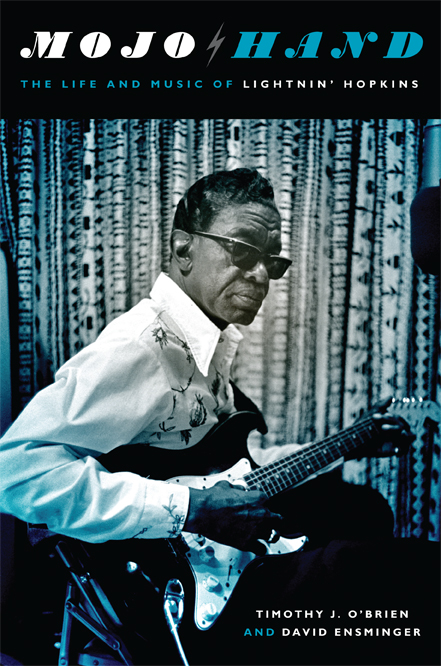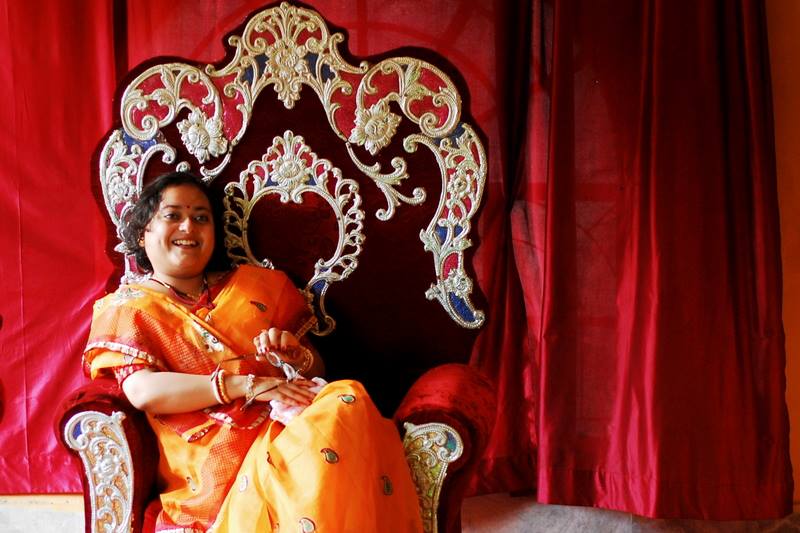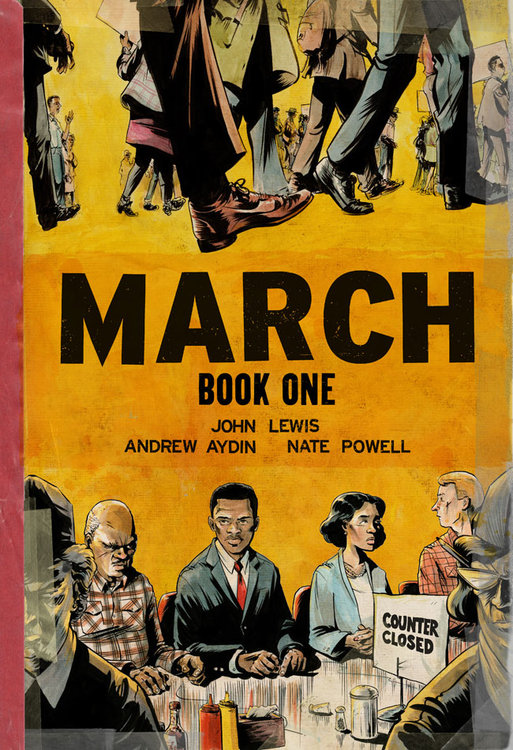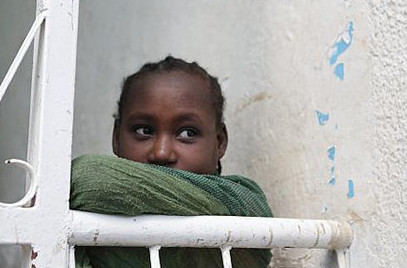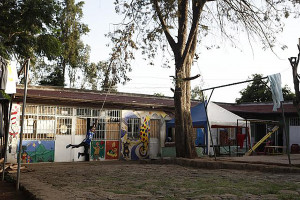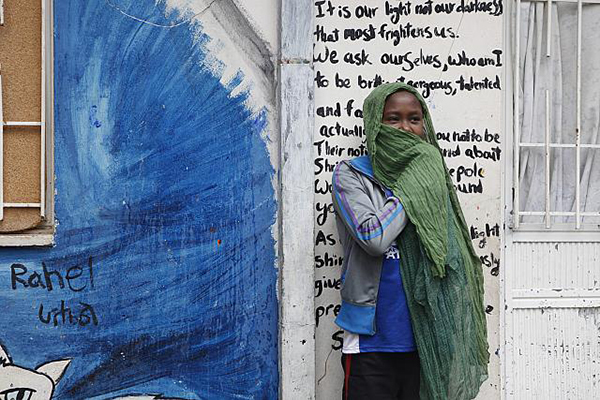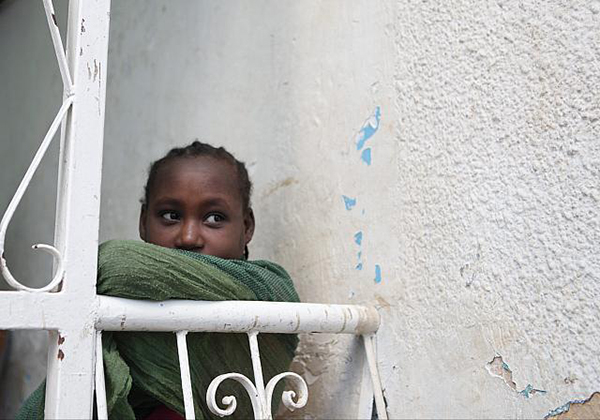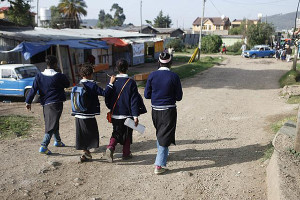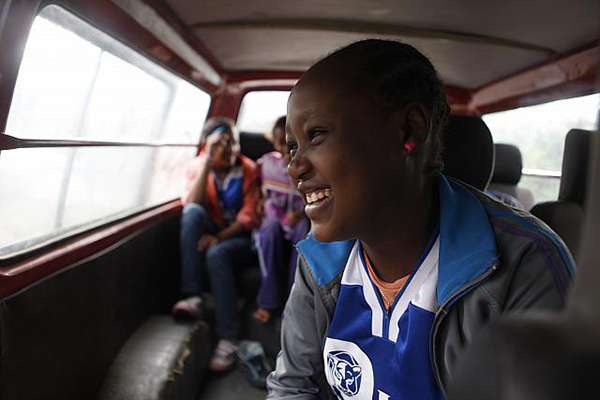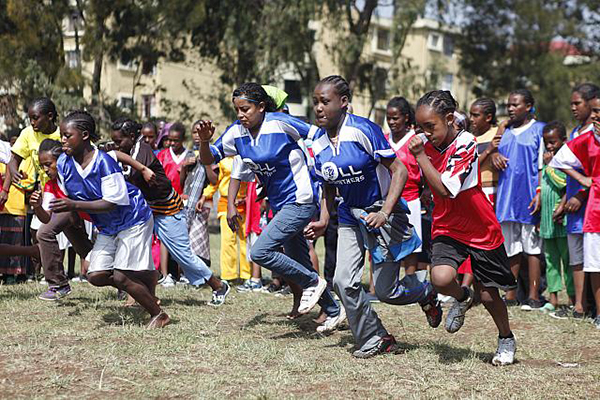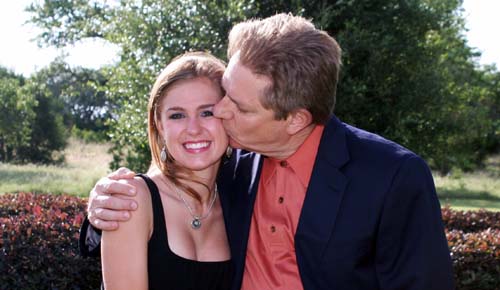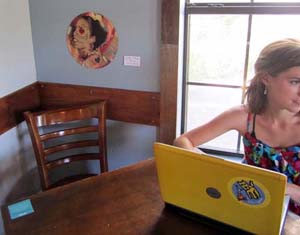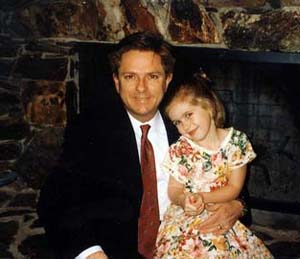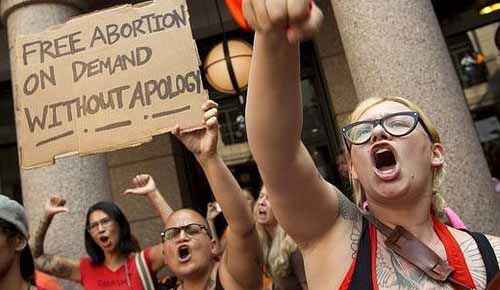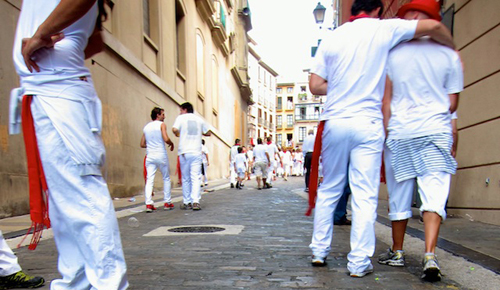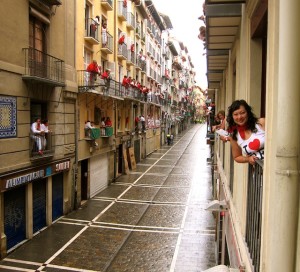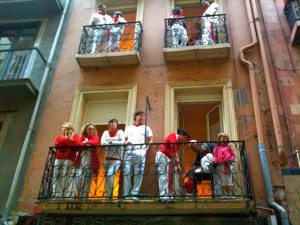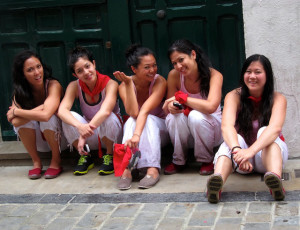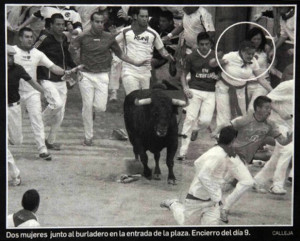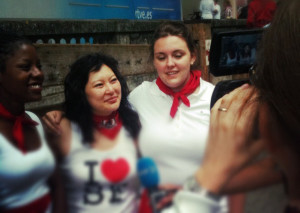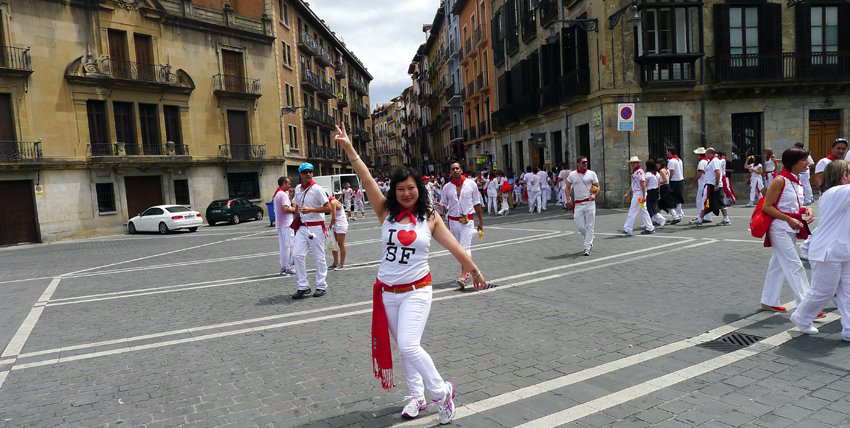As I approached the gate to Black Rock City, a young man came up to my car and greeted me with a warm “Welcome Home.” I had arrived at Burning Man: a week-long arts festival in the Nevada desert held annually since 1986.
Before I became a “Burner”—what the festival calls its attendees, almost 70,000 strong this year—I had dismissed it as a drugged-up, hippie rave in the desert. Months later, certain images of the festival’s spectacle have stayed with me: the skydivers falling onto the sand dunes, the parade of hundreds of topless women on bicycles, the square-rigged pirate ship sailing across the desert on wheels, the skateboard park shaped like a heart. But what stands out to me most about my first visit there is something else: the real and vital community I was surprised to find among the festival’s motley crowd of academics and soldiers, financial advisors and college students, Silicon Valley techies and artists.
At the Burning Man festival at the end of last summer (captured in the accompanying photos by Sari Blum), I came across men and women like Raymond Raven, who was volunteering as a medic. Burning Man does not allow any monetary exchanges except for buying ice and coffee. Instead, attendees swap goods and services, or just offer them for free. Raven, a forty-two-year-old hand and upper extremity surgeon from Burbank, California, didn’t mind that his physician skills weren’t being compensated with dollars. The informal nature of his dealings with other Burners meant that there was no insurance and legal paperwork to process, and it gave Raven the chance to put into practice his conviction that health care is a “right and not a privilege.”
More importantly, it connected Raven with the people he treated in a way he couldn’t at his day job. “Hugs and gifts are by far the best payment I have ever received,” Raven says. The festival, he adds, encourages people to remember “just how connected we are to one another.” (It also helps that there is very limited Internet and cell phone service, keeping Burners focused on each other, not their LCD screens.)
Gift-giving is a crucial part of building community in Black Rock City. Gifts often come in the form of jewelry, massages, advice, or just a swig of water. Your food may be a gift as well—from the woman who chased you down at sunrise to offer a hot breakfast from her tiny cart.
Sometimes the gifts take more elaborate forms. The city—built anew with every festival, only to be torn down at the event’s end—consists of a main camping area, formed by a series of concentric and radial streets, and an area reserved for art installations. There, the enormous wolf you can climb inside of is not just an object of art, but a gift to the Burners from the artists among them. At night, colorful lasers shoot across the night sky, and atop an art installation you can see a sea of neon lights spread out across the desert. When you walk through a tunnel made of plastic and emerge into a giant dome for a communal shower with about a hundred naked people and a DJ spinning—that experience is also a gift, and, potentially, the only time you might bathe that week.
Gillian Grogan, an MIT student and musician, says the gift-giving is contagious, making her want to reciprocate in kind. People in the outside world, she says, “have forgotten how to accept and give anything, either material or immaterial.” Feeling that warmth of giving and receiving without the intent to profit encourages Burners to see each other in a different light—as if they are truly at home, among friends. Grogan says she hopes that the altruism she experienced in Black Rock City will continue to “rub off” in her life beyond its gates.

Sociologist Katherine K. Chen has written (in this magazine as well) about the unconventional and intense ways that Burning Man gets ordinary people involved in what amounts to an international social movement. (A quarter of festival-goers come to the event from overseas, according to a 2012 census conducted by the event’s organizers.) Volunteers devote months of planning and preparation to building a community from the ground up and making it function—and inspire—as an idealistic, alternative vision of life beyond the outside culture of consumption and status-seeking.
That alternative, DIY ethos is at the heart of the festival. Across the “playa”—what festival-goers call the dry lakebed in Nevada’s Black Rock Desert where Burners gather every year—the thumping electronic dance music reminded me of other large festivals, such as Coachella in California and Ultra in Miami. But those events are sponsored by corporations like Heineken and Red Bull, while the elaborate stages and massive art installations at Burning Man are all constructed by the festival-goers themselves.
As Chen writes, Burning Man breaks down the divide that separates formally trained artists and professional managers from everyone else, letting people find their own ways, however large or small, to be creative and contribute—whether that means assembling a stage or art installation, building one of the altered “mutant” vehicles that traverse the playa, performing dance or music, or volunteering the many other skills they use, or don’t use, in the outside world.
Of course, there are also plenty of drugs and exhibitionists at Black Rock City, true to the outside stereotype. But that’s not what I, or many other festival-goers, really got out of our Burning Man experience. Mickey Larsen, seventy-two, a retired high school teacher from Santa Cruz, California, was “dragged” to this year’s festival by his son and friends. Before he arrived in Black Rock City for the first time, Larsen had assumed the event would consist of “loud music, drugs, and pseudo-mystic gatherings.” But there was much more to it than that, he says. He describes the festival as an “intellectual and spiritual playground,” a coming together of immense amounts of energy and creativity to create and nurture an “authentic cooperative community.”
That’s what stayed with me, too, when I returned to “the default”—a term Burners use to describe life outside Black Rock City. Burning Man was less about the partying and more about creating a strong and open community, one without judgment, where radical self-expression is not just accepted, but encouraged as an end in itself.
That spirit carried on to the fiery end of the festival. Of the dozens of art installations assembled in Black Rock City every year, the highlights are two towering wooden structures, the Temple and the Man. In the Temple, Burners leave notes throughout the week that describe the suffering they are dealing with. The Man is seen as a symbol of conformity and oppression.
On the festival’s final weekend, both structures were burned to the ground. The next day, the temporary community of Black Rock City folded up its tents, and the people left the desert, taking their possessions with them and, perhaps, something more.
Hannah Albarazi is a journalist currently based in San Francisco, where she covers breaking news. Sari Blum is a freelance photographer also based in the San Francisco area.
- Follow us on Twitter: @inthefray
- Comment on stories or like us on Facebook
- Subscribe to our free email newsletter
- Send us your writing, photography, or artwork
- Republish our Creative Commons-licensed content

